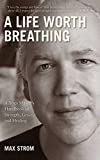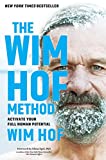Health Benefits Of Breathing Exercise & Exposure To Cold
Did you know, that on average the human body can go 3 weeks without food, 3 days without water but only 3 minutes without air?
Breathing is something we do 23000 times a day and weight of all involved breathing muscles is around 10 pounds of our total body weight.
Cost of respiratory system accounts for 3-6 % of total VO2 Max, heavy exercise demands 10 % and maximal exercise adds up to 13-15 % of oxygen consumption.
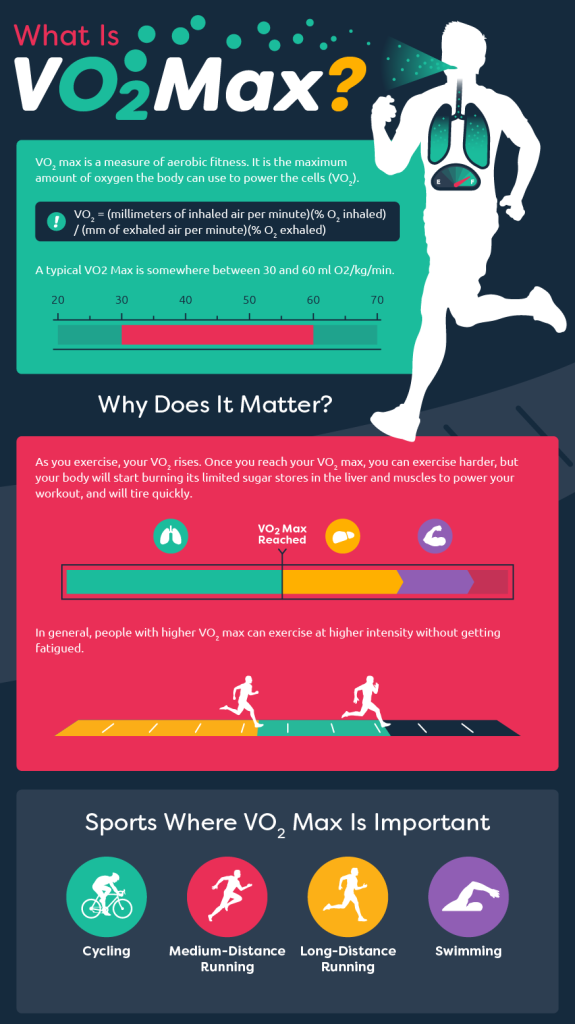
VO2 Max, also known as maximal oxygen uptake, is the measurement of the maximum amount of oxygen a person can utilize during intense exercise. It is a common measurement used to establish the aerobic endurance of an athlete prior to or during the course of training.
VO2 Max is generally regarded as the best indicator of cardio-respiratory fitness. The higher your VO2max, the better your conditioning and cardio levels.
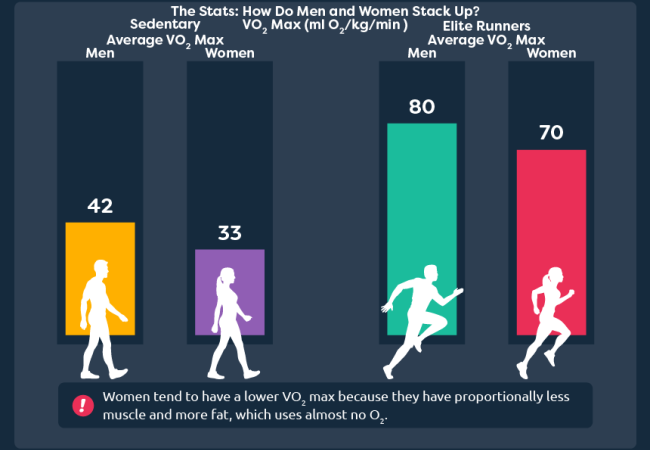
Let’s now shortly take a look at our hardest working muscle, called heart. It pumps out 2 ounces or 71 grams of blood at every heartbeat. Daily the heart pumps at least 2,500 gallons or 9,450 liters of blood.
The heart has the ability to beat over 3 billion times in a person’s life. Each beat of our heart is the result of interplay of the 2 branches of autonomic nervous system.
Sympathetic, which prepares the body for the “fight or flight” response during any potential danger in order to keep us safe. And on the other hand, Parasympathetic which inhibits the body from overworking and restores the body to a calm and composed state also known as “rest & digest”.
Different patterns of breathing change our feelings for better or worse, without us even realizing where it’s coming from and that’s HUGE in my opinion. Sympathetic breathing, that “quote & quote” running from the lion stressful breathing over a period of time will cause all kind of health issues. To name just a few and most frequent are acid reflux, migraines, lower back pain, anxiety, depression, erectile dysfunction and ibs or irritable bowel syndrome causing cramping, abdominal pain, bloating and constipation.
We can use our breath to realize how present we are. Shallow breathing equals to being distracted and on the other hand deep breathing means we are present and mindful. When we’re breathing very shallow, our body is in that state of panic, which triggers this sympathetic overdrive. Being always on the GO is robbing us of our ability to live emotionally rich life. This is why it’s essential taking a very brief break several times a day in order to interrupt the stress and breathing in a stressful way, minimizing those fight or flight signals to our body, with our full awareness and best intentions for our health, sounds good? It often takes pausing and taking 1 or 2 deep breaths to avoid tragedy, it is that important and I want you to really recognize this great gift we all have at our disposal 24hrs a day, 7 days a week and 365 days a year, until…our very last exhale.
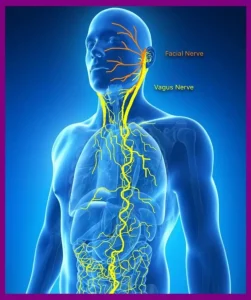
Until then, breath affects our heart, brain, memory, sleep, digestion and immune system, so there is no doubt it is vital to master the proper breathing. This is where the Vagus nerve serves as the body’s superhighway, carrying information between the brain and the internal organs and controlling the body’s response in times of rest and relaxation. The large nerve originates in the brain and branches out in multiple directions to the neck and torso, where it’s responsible for actions such as carrying sensory information from the skin of the ear, controlling the muscles that you use to swallow and speak and influencing your immune system. Vagus nerve is essential for functioning of all our major organs including brain, heart, liver, kidneys and lungs.
When this nerve is activated it acts as a break pedal, slowing down an overstimulated nervous system. Every single breath activates the vagus nerve and the deeper the breath is the more powerfully activated the nerve becomes, promoting the health of organs. Deep breathing also stimulates the prefrontal cortex responsible for higher mental functioning essential for decision making, emotional control and social interactions.
Practice as simple as focusing our attention on our breath has the effect of enhancing our general awareness. It triggers that calming-parasympathetic nervous system, release of Oxytocin and overall well-being. We can use our breath to bypass our brain chemistry in situations that are typically very difficult to handle.
If you get into a rhythm of deep breathing daily, you will heal faster and live a much healthier life. Breathing for healing supports this simple idea, where there is oxygen, there is life.
By proper breathing we’re detoxifying our body, delivering more nutrition to our cells that we’re giving it in our healthy diet…hopefully healthy hey?
Let’s invest 23000 times in our vitality and better health simply by fully functional breathing. Here is how it’s done!
What is a proper breathing technique?
Most of us use what breathing expert Dr. Belisa Vranich calls “vertical breathing.” When you breathe vertically, your shoulders go up during the inhale and everything in your torso stretches up vertically. When you exhale, your shoulders go back down.
While it may feel like you’re taking a full breath when you breathe vertically, you’re not. You’re primarily using the tops of your lungs, which are the smallest parts of these organs. By using less of your lungs to inhale, you’re depriving your body of the oxygen it needs to function at its best. Dysfunctional breathing is the respiratory equivalent of eating fast food, not once or twice but 23000 times a day.

Shallow mouth breathing constricts airways and blood vessels, which decreases oxygen delivery to our muscles, tissues, heart and brain.
Deep nasal breathing has the opposite effect. It opens our airways and dilates blood vessels, which allow for better oxygen delivery. Nasal breathing also increases Nitric Oxide levels. Nitric oxide is the gas that we naturally create in our nasal cavity. It is a vessel dilator, which relaxes inner muscles of our blood vessels, causing our vessels to widen.
Another reason to breath through the nose is to avoid over breathing. The amount of oxygen our muscles and tissues are able to use is not solely dependent on the amount of oxygen in our blood. Our red blood cells are normally saturated with between 95-99 % of oxygen, which is more than enough our body needs for intense exercise. Since our blood is already full of oxygen, taking in more oxygen with bigger breaths, doesn’t increase the amount of oxygen our muscles are able to use. Instead it is important to get this oxygen out of our red blood cells, so it can be used by our muscles and tissues. Carbon dioxide is what allows for oxygen to release from the red blood cells. If we take large breaths through our mouth, we lose large amount of this precious carbon dioxide, which results in less oxygen reaching our muscles and tissues, makes more sense now? This physiological phenomenon is called the Bohr effect. Essentially, oxygen is carried by a protein inside red blood cells, called hemoglobin.
In increase of Co2(carbon dioxide) increases our blood’s PH levels and hemoglobin releases its load of oxygen, so that it can be used by our muscles and tissues. Decrease in Co2 has the opposite effect, it decreases our blood’s PH levels and causes hemoglobin to hold onto its load of oxygen. Another problem of over-breathing is that it can result in increased sensitivity and lower tolerance to Co2. When our sensitivity receptors to Co2 are out of whack due to over-breathing with mouth, we expel more Co2, and again this leads to hemoglobin to hold onto oxygen and we feel breathless even though we’re breathing more and heavy.

The result of this is sub-optimal endurance and a higher risk of injury. It is also helpful realizing, that breathing efficiency doesn’t always translate to fitness levels of an athlete.
Now, what’s the deal with HORIZONTAL/BELLY BREATHING?
So an improper breath is vertical. Does that mean a proper breath is horizontal?
Oh yes, it absolutely does!
Instead of breathing with your shoulders and chest, a correct breath uses your diaphragm muscles. And when you breathe with your diaphragm muscles, your belly moves in and out, while your chest and shoulders stay still.
Breathing efficiently means breathing light, quiet, effortless, soft, through the nose, diaphragmatic, rhythmic and gently paused on the exhale. This is how human beings breathed until the comforts of modern life changed everything, including our breathing.
By the way, have you heard of this vertical and horizontal breathing before? Frankly, I had no idea before I started researching material for this blog, including watching a ton of videos on YouTube. This just makes me realize how much wisdom there is to learn and improve upon from all this new knowledge gained…To be completely honest with you, it often feels quite overwhelming or even a little frustrating at times, but then I read something like this Chinese proverb and it helps me keep going again…
“To get through the hardest journey, we need to take only one step at a time, but we must keep on stepping.”
Chinese proverb
You see, if there is nothing else that’s really good about writing this article, at least I’m learning something new all the time and hopefully you too guys!!! Please don’t forget to let me know how you’re liking this content and topics I’m covering here, but I honestly try my best to help you all, including myself of course to optimize our health, improving our performance and overall well-being and quality of life we live, on journey to become the best possible version of ourselves…
Let me quote words of Max Strom from his Tedx talk, who is a spiritual teacher, breathes work master and author of a book ‘A Life Worth Breathing’:
“Some doors only from the inside, breath is a way of accessing that door.”
Max Strom
Your breathing rate and pattern is a process within the autonomic nervous system that you can control to some extent to achieve different results. You may not be aware of your breath all the time, but through practice you can gain a greater awareness of your breath and learn how to manipulate it to your advantage.
The Wim Hof Method breathing techniques have been developed by Wim Hof, who is also known as ‘The Iceman’. He believes you can accomplish incredible feats by developing command over your body through use of specific breathing techniques.
This is said to help you improve your productivity, performance, and overall well-being. Hof believes that learning to develop mastery over your nervous, immune, and cardiovascular systems will help you be happier, stronger, and healthier.
Ways of exposing your body to cold and it’s positive health benefits
Although there is number of options these are the most common practices:
- Cold shower: Cold showers are any showers with a water temperature below 70°F or 21 degrees Celsius. It has been used for centuries to take advantage of our body’s tendency to adapt to harsher conditions. As a result, our bodies become more resistant to stress.
- Ice bath: In sports therapy, an ice bath is a training regimen usually following a period of intense exercise in which a substantial part of a human body is immersed in a bath of ice or ice-water for a limited duration.
- Cryotherapy or cold therapy: This is a technique where the body is exposed to extremely cold temperatures with the nitrogen gas as a cooling agent for several minutes ranging between -90 to -120 degrees Celsius. Cryotherapy can be delivered to just one area, or you can opt for whole-body cryotherapy by stepping into cryosauna cabin.
Spending just a few minutes in contact with the cold will bring you a multitude of benefits to your health, fitness and well-being.
What are the benefits of cold exposure in conjunction with proper breathing?
Lymphatic Circulation & Immune system
The lymphatic system is a network of vessels that run throughout the body, helping take away waste, bacteria and microbes from your cells, essentially cleansing your body and boosting your immunity.
Cardiovascular Circulation
With poor cardiovascular circulation your blood flow is compromised and this, in turn, means your heart has to work harder to pump blood around your body and to your organs. Cold water or cold exposure, encourages efficient blood circulation.
Weight Loss
Not only does cold water force our bodies to work harder to keep us warm, burning calories in the process and in the long run, boosting our metabolisms, it also has an unexpected impact on the type of fat we produce. Brown fat, also called brown adipose tissue, is a special type of body fat that is turned on (activated) when you get cold. Brown fat produces heat to help maintain your body temperature in cold conditions.
Brown fat contains many more mitochondria than does white fat. These mitochondria are the “engines” in brown fat, that burn calories to produce heat. By immersing our body in the cold shower, ice bath or whatever option you choose for cold exposure, we’re able to activate brown fat cells by 15 times resulting in 9lbs weight loss per year, incredible right?
Muscle Inflammation
It reduces the lactic acid in your muscles and aids recovery after a tough workout. DOMS be gone! To explain further, DOMS or Delayed-onset muscle soreness is muscle pain that begins after you’ve worked out. It normally starts a day or two after a workout so you won’t feel it during a workout. Pain felt during or immediately after a workout is a different kind of muscle soreness and it’s called acute muscle soreness.
Boosts Energy & Happiness Levels
Cold water triggers a flood of mood-boosting neurotransmitters, which make you feel happy.
Cold exposure can extend our life span
In other words, it increases our body’s master antioxidants, called endogenous antioxidants. These are the antioxidants from within our body produced by the cells, participating directly in the neutralization of free radicals and reactive oxygen compounds, as well as maintaining exogenous antioxidants such as vitamins C and E in their reduced active forms. These antioxidants slow down the process of cellular aging while at the same time, disease fighting white cells count increases. This can be viewed as an adaptation to repeated oxidative stress as a mechanism for body hardening. Hardening is the exposure to a natural thermal stimulus, resulting in an increased tolerance to stress and disease. Exposure to repeated intense short-term cold stimuli is often applied in hydrotherapy used in physical medicine for hardening.
Promotes Deeper, Rhythmic Breathing
The practice of regulating your breath and taking longer, deeper more quality breaths carries through to your everyday breathing.
Mental Resilience & Strong Willpower
Overcoming the cold is as much a mental exercise as it is physical. Tempering your thoughts and adapting to adversity will make you much more resilient and focused on endurance which is key for resistance training.
Other Benefits are:
- Reduces anxiety and combats depression >>> The process helps cage the monkey mind and breathing assists this.
- Increases alertness >>> You are uber clear and ‘on’.
- Wakes you right up >>> Nothing says ‘good morning’ better than a cold-water shower.
- Puts you to sleep >>> It also helps promote the creation of Melatonin, a vital component of healthy, restful sleep.
And what’s my conclusion?
The cold as Wim suggests is merciless but righteous. I explored this topic in detail to give you a fully comprehensive overview of it.
Give it a shot, test it even for a few days and let me know how you got on with it. If you already experimented with cold exposure yourself or maybe you have a better system or hack that impacted your overall health in a positive way, give me a shout, so I could try that for a change…
Please as always, if you like this blog post article and find it useful, do me a favor by subscribing and sharing with those who might be interested in ways of improving their lives by implementing these simple tools and techniques.
Let me know what information you found most helpful by commenting or getting in touch with me @Fighterpreneur on Facebook or Instagram and also check out my new YouTube channel @Fighterpreneurs Life.
Lastly, don’t forget to tune in again for my next episode of Fighterpreneur’s Life podcast, where I’ll be talking about The Art of Happiness.

